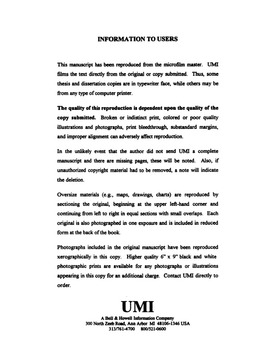| dc.contributor.advisor | Nussbaum, Jon, | en_US |
| dc.contributor.author | Chung, Leeva Chiliing. | en_US |
| dc.date.accessioned | 2013-08-16T12:30:17Z | |
| dc.date.available | 2013-08-16T12:30:17Z | |
| dc.date.issued | 1998 | en_US |
| dc.identifier.uri | https://hdl.handle.net/11244/5698 | |
| dc.description.abstract | Ethnic identity is frequently characterized as having objective, subjective, and situational components. Separating these components becomes difficult especially when research taps into the personal, diverse experiences of individuals. In any event, ethnic identity may be seen as an intricate interplay and dialectical tension that involves the process of "becoming" in a complex social setting. | en_US |
| dc.description.abstract | Currently, Asian Americans are one of the fastest growing ethnic groups in the United States. This heterogeneous category includes immigrants, refugees, and American born residents. The need to understand "who we are" is a complicated and internally driven question (Ting-Toomey, 1981) that is based on who we consider to be the constructed social group to which we belong or the reference group to which we aspire to become a part. | en_US |
| dc.description.abstract | Many of the Koreans Americans and Vietnamese Americans, who participated in this study, strove to integrate their ethnic identity with activities that they conducted in Oklahoma. Furthermore, members of both groups desired to be accepted members both of their own ethnic community and the dominant society despite reminders in interactions, in the media, and from symbols emanating from U.S. institutions that they constituted an outgroup. (Abstract shortened by UMI.) | en_US |
| dc.description.abstract | The present study examined how ethnic identity is perceived and negotiated by two Asian American groups in Oklahoma City: Korean Americans and Vietnamese Americans. A total of 168 Korean Americans (n = 54) and Vietnamese Americans (n = 114) were interviewed to assess the subjective ethnic identity experiences. Standardized open-ended and closed-ended questions were utilized. Two open-ended questions were used to capture the ethnic identity experiences. Participants were asked to examine Berry and Sam's (1997) figure and explain if the ethnic "type" they chose best represented how they viewed their ethnic identity. The Ethnic Identity and Cultural Salience (EID) Questionnaire of Ting-Toomey et al. (in press) was replicated to confirm the original factors found in their study and was used to gauge objective measurements of ethnic identity. | en_US |
| dc.description.abstract | An emergent thematic analysis was employed to interpret qualitative answers concerning internal ethnic identity. A total of 194 comments were coded and these comments revealed nine different categories across the two different contexts, (i.e., the self-perception of ethnic identity and the perception of identity by ethnic group members). Four themes related to the perception of identity by ethnic group members. | en_US |
| dc.description.abstract | The final element of ethnic identity salience assessed the situational context of ethnic awareness. Participants were asked about particular situations in which they felt most aware of their ethnicity. | en_US |
| dc.format.extent | xii, 140 leaves ; | en_US |
| dc.subject | Korean Americans Ethnic identity United States Oklahoma. | en_US |
| dc.subject | Vietnamese Americans Ethnic identity United States Oklahoma. | en_US |
| dc.subject | Sociology, Ethnic and Racial Studies. | en_US |
| dc.subject | Speech Communication. | en_US |
| dc.subject | Ethnicity. | en_US |
| dc.title | Ethnic identity and intergroup communication among Korean Americans and Vietnamese Americans in Oklahoma. | en_US |
| dc.type | Thesis | en_US |
| dc.thesis.degree | Ph.D. | en_US |
| dc.thesis.degreeDiscipline | Gaylord College of Journalism and Mass Communication | en_US |
| dc.note | Adviser: Jon Nussbaum. | en_US |
| dc.note | Source: Dissertation Abstracts International, Volume: 59-09, Section: A, page: 3286. | en_US |
| ou.identifier | (UMI)AAI9905614 | en_US |
| ou.group | Gaylord College of Journalism and Mass Communication | |
